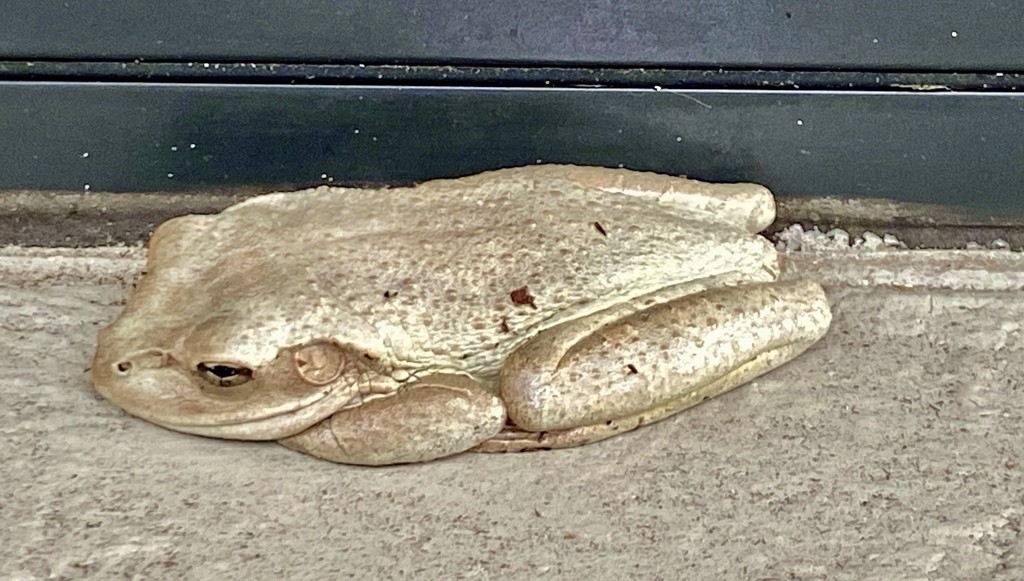Cuban tree frog
A species of Bone-cap Scientific name : Osteopilus septentrionalis Genus : Bone-cap
Cuban tree frog, A species of Bone-cap
Scientific name: Osteopilus septentrionalis
Genus: Bone-cap
Content
Description People often ask General Info
 Photo By stormwatcher21 , used under CC-BY-NC-4.0 /Cropped and compressed from original
Photo By stormwatcher21 , used under CC-BY-NC-4.0 /Cropped and compressed from original Description
Cuban tree frogs (Osteopilus septentrionalis) are the largest tree-dwelling frogs in North America. In warm and humid enough conditions they will breed year-round, laying hundreds of eggs in each clutch. The tadpoles primarily consume algae, while adult cuban tree frogs will eat any creature small enough to fit in their mouths. They are active primarily at night. Cuban tree frogs also have the ability to change their skin color to match their surroundings.
People often ask
General Info
Lifespan
5-10 years
Diet
Cuban tree frog thrives on a diet primarily composed of various insects. Notably, it displays a preference for spiders, beetles, centipedes, and crickets, illustrating its role as an adept predator in its ecosystem.
Appearance
Cuban tree frog is a large tree frog, measuring up to 14 centimeters in length. The frog's smooth skin varies in color from shades of brown to green, often with darker color splotches. Juveniles tend to have a brighter green hue. Its notable features include large golden eyes, powerful hind limbs, and a distinct bony ridge between the eyes.
Behavior
Cuban tree frog is a nocturnal creature with a unique call pattern, used to communicate and attract mates. It has a distinctive habit of inhabiting manmade structures, showing adaptability to urban environments. This species is non-territorial and often found in large groups, demonstrating a sociable nature.
Population
Increasing
Scientific Classification
Phylum
Chordates Class
Amphibians Order
Frogs and toads Family
Tree frogs and their allies Genus
Bone-cap Species
Cuban tree frog